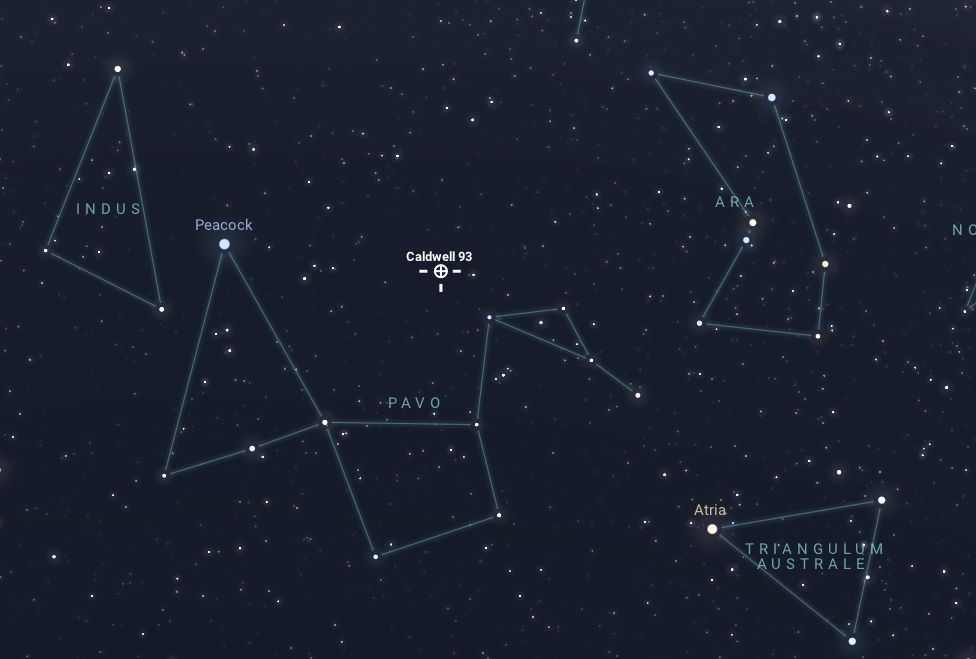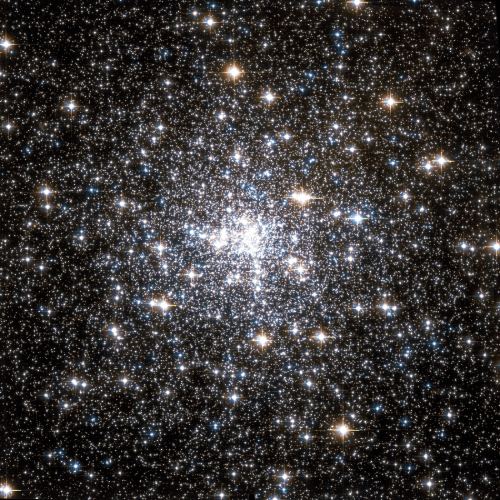NGC 6752, often referred to as the Great Peacock Globular Cluster, is one of the most prominent and well-known globular clusters in the southern sky. Located in the constellation Pavo (the Peacock), the cluster’s nickname is derived from the shape and positioning of the stars within the constellation. It is among the brightest and most impressive globular clusters visible in the Southern Hemisphere.
First discovered by the English astronomer James Dunlop in 1826, NGC 6752 was later catalogued by the renowned astronomer John Herschel. In 1864, Herschel included the cluster in his General Catalogue of Nebulae and Clusters (GC). Since its discovery, NGC 6752 has been a key target of study for both professional and amateur astronomers. Here’s more detailed information about this spectacular cluster:
Physical Characteristics
NGC 6752 is one of the brightest globular clusters in the sky, making it highly visible and easily recognizable. The cluster is situated at a distance of approximately 13,000 to 16,000 light-years from Earth and spans about 100 light-years in diameter. Its large size and high luminosity make it a significant object of study within the realm of stellar and galactic evolution.
The Great Peacock Cluster contains hundreds of thousands of stars, densely packed within its central region. As is typical of globular clusters, these stars are older and metal-poor, characteristics that offer valuable insights into the early stages of the Milky Way’s formation. Some of the stars in NGC 6752 are among the oldest known within our galaxy, further underscoring the cluster’s scientific importance. The stars move in intricate orbits around the centre of mass, and the cluster itself is bound by gravity, orbiting the centre of the Milky Way.
Visual Appearance
With an apparent magnitude of approximately 5.4, NGC 6752 is visible to the naked eye under dark, clear skies. Its brightness, combined with its relatively compact shape, makes it one of the most prominent globular clusters in the sky.
Through binoculars, NGC 6752 appears as a bright, dense ball of stars. When viewed through a telescope, the cluster reveals a detailed structure, with its tightly packed core surrounded by a more diffuse halo of stars. This makes the cluster especially striking in amateur telescopes, which can resolve individual stars in the outer regions, offering a view of the cluster’s vast stellar population.
Scientific Interest
NGC 6752 is of great interest to astronomers due to its potential to reveal crucial information about the formation and evolution of galaxies. Globular clusters are often considered relics of the early universe, preserving the properties of the primordial stellar populations from which they formed. Studying the stars within this cluster helps scientists gain a deeper understanding of the age, composition, and dynamics of globular clusters. In turn, this research contributes to our broader understanding of the Milky Way’s formation and evolution over cosmic time.
NGC 6752’s rich star population also makes it a useful laboratory for the study of stellar evolution, providing insights into the life cycles of stars that are significantly older and less chemically enriched than those in younger clusters or in the general population of the galaxy.
Observation
NGC 6752 is visible all year round from locations in the Southern Hemisphere, although it may be low on the horizon during certain seasons.
For observers in the Southern Hemisphere, the Great Peacock is ideally placed for viewing during the late winter to early spring months, which span from June to October. During this period, NGC 6752 (located in the constellation Pavo), reaches its highest point in the sky, making it particularly easy to observe, especially from locations with minimal light pollution and clear skies. In cities with significant light pollution, the use of binoculars or a telescope may be necessary to fully appreciate its bright, compact structure.

As the months transition into late spring and early summer, the cluster will appear lower in the sky, and observations may require more effort as it sets earlier in the evening. However, NGC 6752’s bright and distinctive appearance ensures that it remains a rewarding target for stargazers during its peak visibility months.



